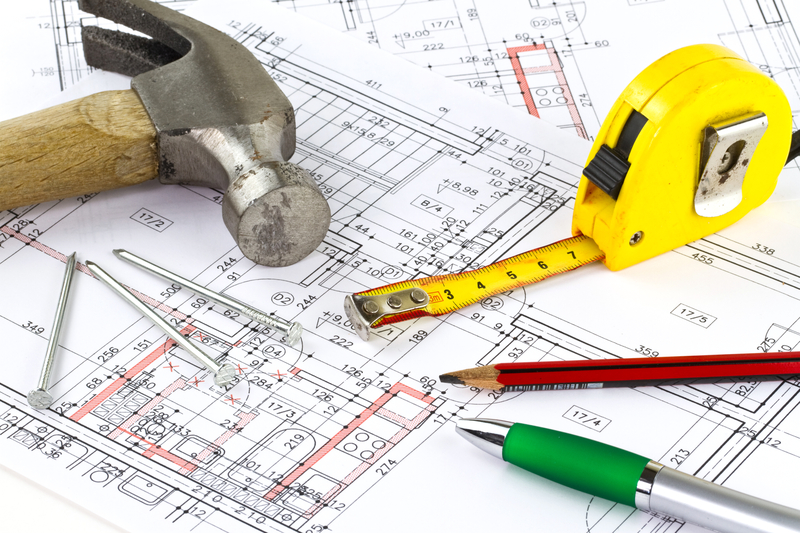Falling interest rates are expected to make it easier to pay for big home-improvement projects. By this time next year, the annual rate of spending on home repair and renovation is expected to approach record levels.
More homeowners are borrowing against the rising value of their properties, suggesting that the worst of the remodeling slump has passed.
Analysts and building-products executives are forecasting lower interest rates will fuel a rebound next year in spending on new kitchens, bathrooms and decks, reviving a reliable source of economic activity and stock-market gains.
Spending on home repairs and renovations surged during the pandemic, when Americans were cooped up at home. Then it contracted for the first time since the aftermath of the 2008 mortgage meltdown, as the highest borrowing costs in a generation slowed home sales and made it expensive to tap home equity to pay for big jobs.
Now, with the Federal Reserve cutting interest rates, the mountain of home equity that Americans have amassed thanks to sharply rising property values is getting cheaper to access.
The latest reading of a closely watched gauge of repair and renovation spending predicts a return to growth next summer. Spending should reach an annual rate of $477 billion by this time next year, Harvard University’s Joint Center for Housing Studies said last week. That would approach the record annual rate of $487 billion reached a year ago, before high rates took a toll.
The drop in home sales has cut down on work undertaken to prepare properties for showings and by buyers fixing up houses to suit their tastes. Meanwhile, high interest rates made it unappealing to borrow against home equity, a common way of paying for big projects.
Though the slump has been relatively mild and is expected to be short-lived, the decline from record highs has dented building-products businesses.
Sawmills, which send 40% of their output to repair and remodeling jobs, have closed and curtailed production across North America. Hardware wholesaler True Value filed for Chapter 11 bankruptcy protection last week and has agreed to be acquired by rival Do it Best. Some of the pandemic’s highflying stocks, such as Pool Corp.and composite decking company Trex, have dropped this year, falling 10% and 24%, respectively.
Rock-bottom borrowing costs and stay-at-home orders pulled forward a lot of remodeling projects during the pandemic. But over the past two years, expensive financing has prompted many people to defer pricey repairs and renovations, even as their home values continued to swell, according to John Burns Research & Consulting.
Americans have more than $35 trillion in home equity, up 81% from the end of 2019, according to the Fed. That is an average of about $400,000 per U.S. homeowner, John Burns estimates.
“We think there’s $30 billion in remodeling spending just sitting on the sidelines today, waiting to be spent,” said Matthew Saunders, senior vice president of building products research at John Burns.
The firm recently polled 475 households that said they are waiting for lower rates to use home-equity lines of credit to fund projects. They broke down into two groups: 30-somethings planning work in the $60,000 range and older homeowners eyeing updates that will cost closer to $30,000.
The former are motivated by marriages, babies and career changes. They are less sensitive to interest rates and prone to remodel sooner, Saunders said. The latter will let borrowing costs influence when they build their dream deck or splurge on a new kitchen.
The volume of cash-out refinancings—in which homeowners replace their mortgage with a new loan and pocket the difference—was up 50% in September from a year earlier and 6% higher than in August, according to Optimal Blue, a mortgage-software company that tracks when borrowers lock into loan rates.
At about $7 billion, cash-out loans were well off the $35 billion taken out in August 2021. Yet that was the most since September 2022 and nearly twice last December’s low. The uptick notably came as the summer remodeling season was winding down and such lending usually slows, said Brennan O’Connell, Optimal Blue’s director of data solutions.
Many cashing out equity probably bought homes within the past two years and are taking their first chance to lower monthly payments and withdraw money for remodeling, he said. Millions of others who took out historically low mortgages during the pandemic are more likely to layer on a second home loan rather than replace their cheap financing. The lock-in effect could discourage many from moving to new homes and instead expand or renovate the homes they already own.
“The incentive to do that has never been greater,” O’Connell said. “People aren’t going to get rid of their 2.5% or 2.75% mortgages, maybe ever.”
A risk to a recovery—and to shares of companies that sell products from swimming pools to paint—is that would-be remodelers hold out for a bottom in borrowing costs, said Kurt Yinger, a building products analyst at D.A. Davidson.
This month, mortgage rates have reversed some of their summer decline because strong jobs data has bond traders rethinking the pace of rate cuts. “That dynamic has people a little bit wary in terms of the timeline,” Yinger said.
Ryan Dezember, Wall Street Journal
